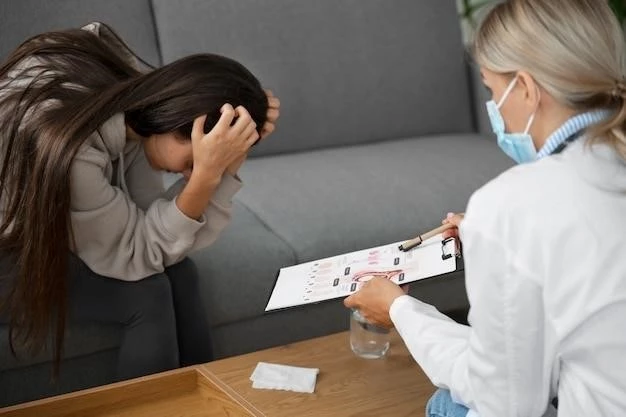Understanding Chondromalacia
Chondromalacia can be caused by overuse‚ injury‚ muscle weakness‚ or poor alignment of the kneecap.
Symptoms include knee pain‚ swelling‚ grinding sensation‚ and difficulty climbing stairs.
Treatment may involve rest‚ physical therapy‚ pain management‚ and in severe cases‚ surgery.
Causes of Chondromalacia
Chondromalacia‚ commonly known as ″runner’s knee‚″ can be caused by various factors. Overuse of the knee joint‚ especially in activities like running or jumping‚ can lead to this condition. Additionally‚ direct trauma to the kneecap‚ such as a fall or blow to the knee‚ can result in chondromalacia. Muscle imbalances or weakness‚ particularly in the quadriceps muscles‚ can also contribute to the abnormal movement of the kneecap‚ causing wear and tear on the cartilage underneath. Poor alignment of the patella‚ the triangular bone covering the knee joint‚ can create excessive pressure and friction on the cartilage‚ leading to its degeneration.
Other risk factors that may increase the likelihood of developing chondromalacia include flat feet‚ which can alter the alignment of the lower body‚ and improper biomechanics during physical activities. It is essential to address these causes to prevent the progression of chondromalacia and alleviate symptoms related to this condition.
Symptoms of Chondromalacia
Recognizing the symptoms of chondromalacia is crucial for timely intervention. Common signs include⁚
- Knee pain‚ especially around or behind the kneecap
- Swelling or fluid retention in the knee joint
- A grinding or grating sensation when moving the knee
- Pain aggravated by activities like climbing stairs‚ kneeling‚ or prolonged sitting
- Weakening of the quadriceps muscles
- Sometimes‚ a feeling of the knee ″giving way″ or instability
If you experience any of these symptoms‚ it is advisable to consult a healthcare professional for a proper diagnosis and treatment plan. Early detection and management can help prevent further degeneration of the knee joint and improve overall quality of life.
Treatment Options for Chondromalacia
Several treatment approaches can help manage chondromalacia and alleviate symptoms⁚
- Rest and Activity Modification⁚ Limiting activities that aggravate symptoms can aid in the healing process.
- Physical Therapy⁚ Strengthening exercises for the quadriceps and hamstrings can help stabilize the knee.
- Pain Management⁚ Over-the-counter or prescription medications may be used to control pain and inflammation.
- Ice Therapy⁚ Applying ice packs to the affected knee can reduce swelling and discomfort.
- Bracing or Taping⁚ Providing support to the knee joint can improve alignment and reduce stress on the cartilage.
- Injections⁚ In some cases‚ corticosteroid injections may be recommended for pain relief and inflammation reduction.
- Surgery⁚ When conservative treatments are ineffective‚ surgical procedures like arthroscopy or patellar realignment may be considered.
It is essential to work closely with healthcare professionals to determine the most appropriate treatment plan based on individual needs and severity of chondromalacia.
Exercises for Chondromalacia
Specific exercises can play a vital role in managing chondromalacia and strengthening the muscles around the knee joint. Some recommended exercises include⁚
- Straight Leg Raises⁚ Strengthen the quadriceps without straining the knee.
- Hamstring Curls⁚ Work on the hamstring muscles to provide better support to the knee.
- Glute Bridges⁚ Strengthen the gluteal muscles to improve overall lower body stability.
- Mini Squats⁚ Focus on correct alignment and controlled movement to avoid knee stress.
- Calf Raises⁚ Strengthen the calf muscles to support the knee during movement.
- Quad Sets⁚ Activate and strengthen the quadriceps muscles.
It is crucial to perform these exercises under the guidance of a physical therapist or healthcare provider to ensure proper form and avoid exacerbating symptoms. Consistent practice of these exercises can contribute to better knee function and reduced discomfort associated with chondromalacia.
Prevention of Chondromalacia
While chondromalacia can have multiple causes‚ certain preventive measures can help reduce the risk of developing this condition⁚
- Proper Warm-Up and Stretching⁚ Always warm up before physical activity and incorporate stretching exercises to maintain muscle flexibility.
- Maintain Healthy Body Weight⁚ Excess weight can put added stress on the knees‚ so maintaining a healthy weight is essential.
- Use Proper Footwear⁚ Wear supportive and well-fitted shoes‚ especially during high-impact activities.
- Gradual Increase in Activity⁚ Avoid sudden changes in intensity or duration of exercise to prevent overloading the knee joint.
- Cross-Train⁚ Incorporate a variety of activities to prevent overuse of specific muscle groups.
- Listen to Your Body⁚ Pay attention to any signs of pain or discomfort during physical activity and address them promptly.
By implementing these preventive strategies and maintaining a balanced approach to physical fitness‚ individuals can help reduce the risk of developing chondromalacia and promote long-term joint health.
Chondromalacia in Athletes
Chondromalacia is a common concern among athletes‚ particularly those engaged in activities that involve repetitive knee movements or high-impact sports. Runners‚ cyclists‚ basketball players‚ and gymnasts are among the athletes at higher risk for developing chondromalacia due to the consistent stress placed on their knee joints.
Athletes with chondromalacia may experience symptoms such as knee pain‚ swelling‚ and a sensation of grinding or clicking within the joint during movement. It is crucial for athletes to address these symptoms promptly to prevent the condition from impacting performance or leading to more severe issues in the long run.
Proper training techniques‚ appropriate footwear‚ strengthening exercises‚ and adequate rest are essential components in managing chondromalacia in athletes. Working closely with sports medicine professionals can help develop tailored treatment plans and strategies to minimize the impact of chondromalacia on athletic performance and overall knee health.
Surgical Interventions for Chondromalacia
When conservative treatments fail to provide relief or in cases of advanced chondromalacia‚ surgical interventions may be necessary to address the underlying issues⁚
- Arthroscopic Debridement⁚ A minimally invasive procedure to remove damaged cartilage and smooth the knee joint surfaces.
- Realignment Procedures⁚ Surgical techniques to correct the alignment of the patella and reduce pressure on the cartilage.
- Microfracture⁚ Creating tiny fractures in the bone to stimulate the growth of new cartilage.
- Cartilage Transplantation⁚ Transfer of healthy cartilage tissue to damaged areas of the knee joint.
- Osteotomy⁚ A procedure to reshape the bone to alleviate pressure on the affected area.
Surgical interventions for chondromalacia aim to improve joint function‚ alleviate pain‚ and potentially slow down the progression of cartilage degeneration. It is essential to discuss the risks and benefits of surgery with a healthcare provider to determine the most suitable approach based on individual circumstances and the severity of the condition.
Difference between Chondromalacia and Arthritis

Chondromalacia and arthritis are two distinct conditions affecting the joints‚ with some key differences⁚
- Location of Damage⁚ Chondromalacia primarily affects the cartilage under the kneecap‚ while arthritis involves the inflammation of joint tissues.
- Cause⁚ Chondromalacia often results from overuse or injury‚ whereas arthritis can stem from various factors‚ including autoimmune conditions.
- Symptoms⁚ Chondromalacia typically presents with knee pain‚ especially during movement‚ while arthritis can cause joint pain‚ stiffness‚ and swelling in multiple joints.
- Age Group⁚ Chondromalacia commonly affects younger individuals involved in sports‚ while arthritis is more prevalent in older age groups.
- Treatment Approach⁚ Chondromalacia is often managed with rest‚ physical therapy‚ and in severe cases‚ surgery‚ whereas arthritis treatment may include medication‚ lifestyle modifications‚ and joint replacement surgery in advanced stages.
Understanding these distinctions is crucial for accurate diagnosis and effective management of either condition. Consulting a healthcare provider for proper evaluation and personalized treatment is essential in addressing chondromalacia or arthritis appropriately.
